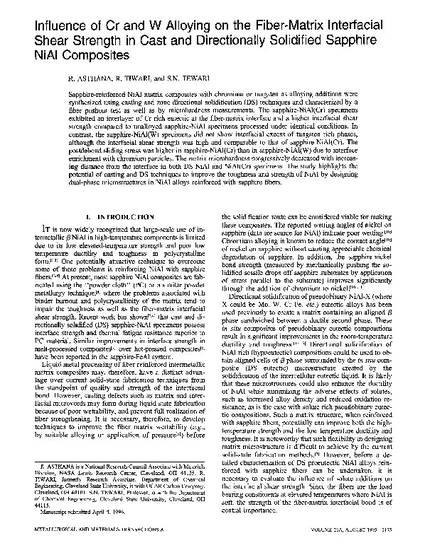
Sapphire-reinforced NiAl matrix composites with chromium or tungsten as alloying additions were synthesized using casting and zone directional solidification (DS) techniques and characterized by a fiber pushout test as well as by microhardness measurements. The sapphire-NiAl(Cr) specimens exhibited an interlayer of Cr rich eutectic at the fiber-matrix interface and a higher interfacial shear strength compared to unalloyed sapphire-NiAl specimens processed under identical conditions. In contrast, the sapphire-NiAl(W) specimens did not show interfacial excess of tungsten rich phases, although the interfacial shear strength was high and comparable to that of sapphire-NiAl(Cr). The postdebond sliding stress was higher in sapphire-NiAl(Cr) than in sapphire-NiAl(W) due to interface enrichment with chromium particles. The matrix microhardness progressively decreased with increasing distance from the interface in both DS NiAl and NiAl(Cr) specimens. The study highlights the potential of casting and DS techniques to improve the toughness and strength of NiAl by designing dual-phase microstructures in NiAl alloys reinforced with sapphire fibers.
Available on publisher's site at: http://www.springerlink.com/content/f6616q586834022h/.
